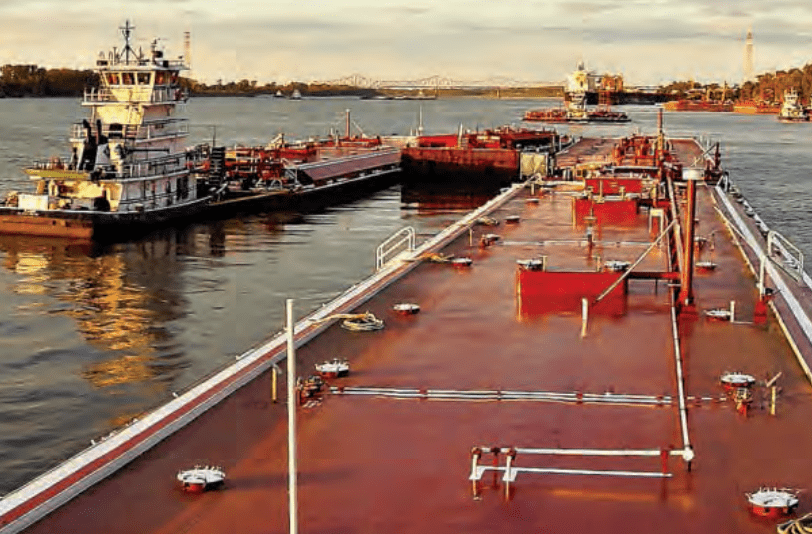Based on cost, safety and level of emissions, barge transportation is often the most efficient and safest means of overland transportation of bulk commodities compared to rail and truck, says the Kirby Corporation.
Kirby is the largest domestic tanker barge operator in the United States, transporting liquid bulk products throughout the Mississippi River system, the Gulf Intracoastal Waterway and along all three coasts of the United States.
Thus, according to this company, the loading capacity of an inland tanker barge of 27,500 barrels is the equivalent of 46 rail tank cars or 144 tank trucks with trailers.
A typical 15-barge liner trailer on the lower Mississippi River has the carrying capacity of approximately 216 rail tank cars plus six locomotives, or approximately 1,050 tank trailers.
Kirby’s inland tanker barge capacity of 22.9 million barrels is equivalent to approximately 38,300 rail tank cars or approximately 120,000 tractor-trailer tankers.
Also, wide Kirby, the barge is much more energy efficient.
A ton of bulk product can be transported 675 miles by barge inland on a gallon of fuel, compared to 472 miles by railcar or 151 miles by truck.
Barges
From an emissions standpoint, rail and tanker transport emit approximately 40 and 800%, respectively, more CO2 per tonne-mile of cargo transported than an inland tanker barge.
In coastal trade, the carrying capacity of a 100,000-barrel tanker barge is equivalent to approximately 165 rail tank cars or approximately 525 tractor-trailer tankers.
The company’s coastal tanker barge fleet capacity of 3.1 million barrels equates to about 5,250 rail tank cars or about 16,450 tractor-trailer tankers.
Maritime transport generally involves less urban exposure than rail or truck transport and operates in a system with few crossings and often in areas relatively remote from population centers.
These factors help reduce the number of incidents on the waterways.
Kirby transports petrochemicals, black oil, refined petroleum products, and agricultural chemicals by tanker barge.
Now, America’s inland waterway system, made up of a network of interconnected rivers and canals that serve the nation as water highways, is one of the most efficient transportation systems in the world.
The nation’s inland waterways are vital to the US distribution system, with more than 1.1 billion short tons of cargo moving annually on US shallow waterways.
The inland waterway system stretches approximately 26,000 miles, 12,000 miles of which are generally considered important for domestic commerce, through 38 states, with 635 shallow ports.
Kirby posted revenue of $2.247 million in 2021, an increase of 3.5% over 2020 and a drop of 20.8% compared to 2019.
It had a net loss of 247 million dollars in 2021 and 272 million in 2020, while in 2019 it had a net profit of 143 million.
![]()

